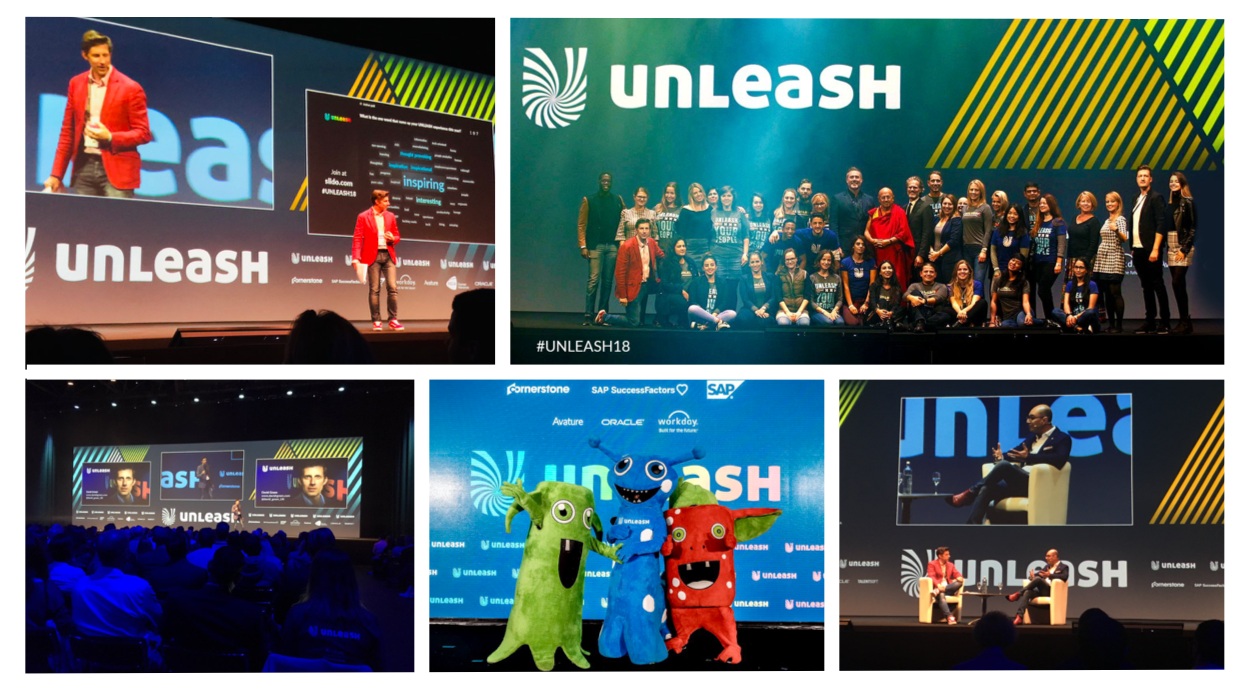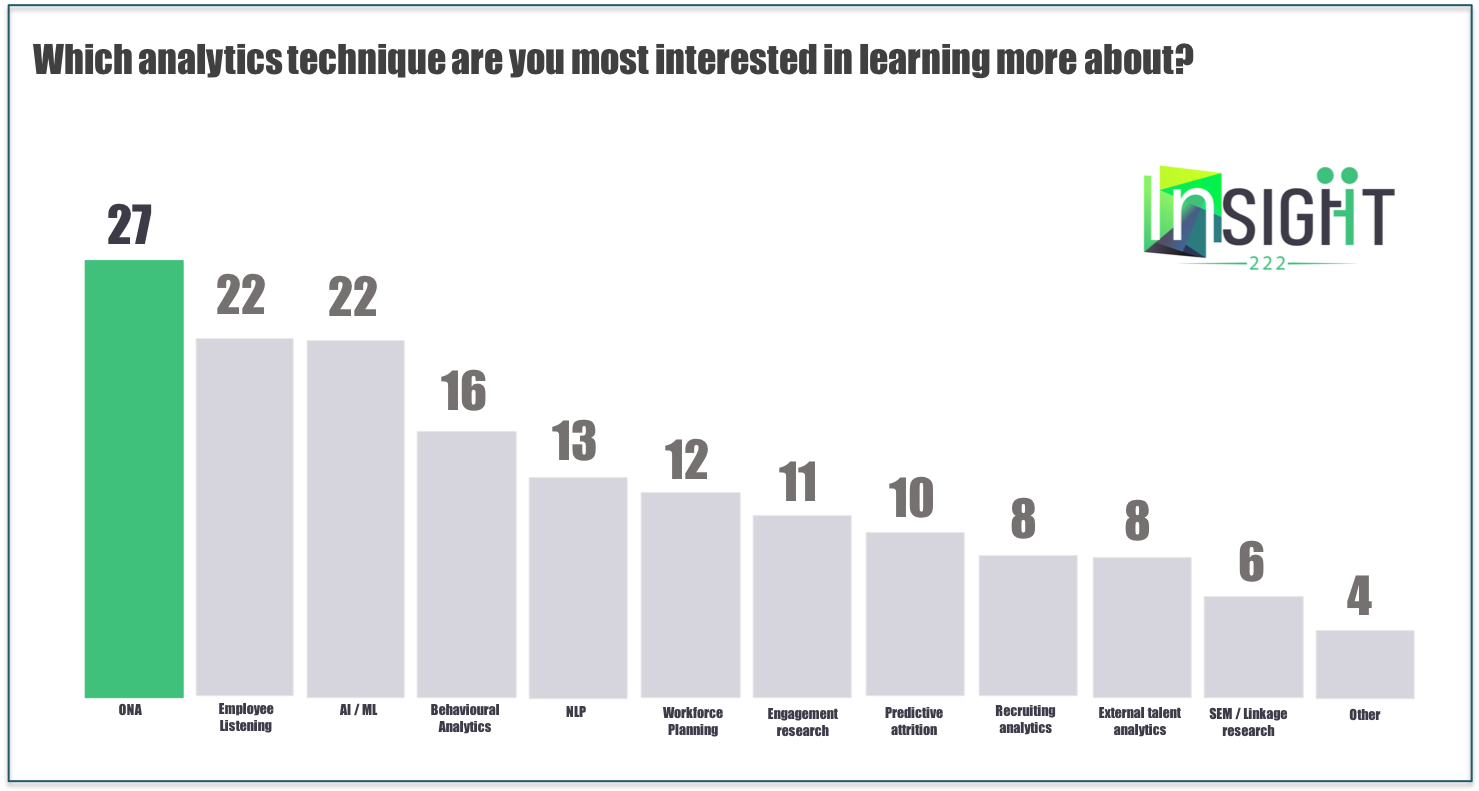The case for diversity and inclusion in the workplace is compelling – not just because it is the right thing to do, but because numerous studies suggest it can drive better business performance too. The articles selected cover research, methodologies, technologies that are focused or have features on diversity and inclusion, the role people analytics can play (see example of creating impact in image below) and several case studies. Enjoy!
UNLEASH 18 Amsterdam: What a show!
Announcing...
Seven Steps to Getting Started with People Analytics
The best HR & People Analytics articles of September 2018
In this month’s edition, you’ll find articles by authors including Ben Waber, Francesca Gino, Jonathan Ferrar, Laura Stevens, John Sumser, Stacia Sherman Garr and Josh Bersin. Subjects covered include the latest trends in people analytics, ethics, organisational network analysis, the importance of curiosity, employee wellness and continual listening. There is news too about Insight222, PAFOW, the official launch of Humu and another acquisition by LinkedIn. Dive in and enjoy!
Four groups that benefit from people analytics
The best HR & People Analytics articles of June 2018
The revolution will be televised: six takeaways from UNLEASH America
The role of Organisational Network Analysis in People Analytics
One of the most exciting trends in people analytics is the rapid growth of Organisational Network Analysis (ONA), which whilst not new is witnessing a resurgence thanks to developments in technology, new ways of working and changing business requirements.
When I meet with people analytics leaders, ONA regularly crops up in the conversation as one of the techniques that they have either already begun to use or plan to deploy within their organisations.
Indeed, research conducted by Insight222 towards the end of 2017 (see Figure 1 below) found that ONA was the analytical technique that people analytics leaders most wanted to learn more about.
Figure 1: Organisational Network Analysis is the technique that HR & People Analytics leaders most want to learn more about (Source: Insight222)
The role of ONA in people analytics was the topic of my presentation at UNLEASH in Las Vegas on 15 May. The slides I used during my speech are included here. The purpose of this article is to answer the following questions I regularly get asked about ONA:
- What is ONA?
- Why is ONA growing in importance?
- What is ‘Active’ and ‘Passive’ ONA? Which one should we use? Can we use both?
- What can we use ONA for?
- What case studies on ONA are available?
- Where can I find out more about ONA?
WHAT IS ONA?
If you Google ‘Organisational Network Analysis’, you will uncover a lot of dry and technical descriptions of what ONA is, which are mostly a variation of “Organisational Network Analysis is a structured way to visualise how communications, information and decisions flow through an organisation” (which came from Deloitte).
I prefer Michael Arena’s description in his excellent recent podcast with Al Adamsen, where the Chief Talent Officer of GM defined ONA as providing “a new lens to evaluate how people show up in an organisation.
"ONA provides a new lens to evaluate how people show up in an organisation"
Similarly, in his article ‘What is ONA?’, Professor Rob Cross, arguably the world’s foremost expert on the subject, explains that “ONA can provide an x-ray into the inner workings of an organisation — a powerful means of making invisible patterns of information flow and collaboration in strategically important groups visible”. In the same article, Cross provides a perfect example to illustrate this viewpoint and how ONA enables you to see what is going on in a company.
Figure 2 - An example of the insights offered through ONA (Source: Rob Cross)
The example in Figure 2 is of an ONA project undertaken by Cross with the exploration and production division of a large petroleum organisation. It identifies mid-level managers critical to information flow such as Mitchell, who is the only point of contact between members of the production division and the rest of the network. It also highlights that the Senior Vice President Mares is peripheral to the network and is essentially an untapped and under-utilised resource, whilst the Production team is isolated and separated from the network. None of this is visible from the rickety old org chart.
Head over to LinkedIn to read the remainder of: The role of Organisational Network Analysis in People Analytics
Don't forget the 'H' in HR
I believe ethics is the most critical ingredient in people analytics. Those working in the field simply cannot afford to get it wrong. The risk to employee trust and to the reputation of the burgeoning discipline of people analytics is too high.
‘Ethics, Trust and People Analytics’ is the title of my presentation, which will open the Smart Data breakout at UNLEASH in London tomorrow. It is also the subject of this article, which as well as including a copy of my slides, also features recent research by the IBM Smarter Workforce Institute and Insight222.
ETHICS JEOPARDISES FOUR OUT OF EVERY FIVE PEOPLE ANALYTICS PROJECTS
Research in November 2017 from Insight222 found that 81% of HR people analytics leaders and practitioners reported that their people analytics projects were jeopardised by ethical or privacy concerns (Figure 1).
Head over to LinkedIn to read the rest of Don't Forget the 'H' in HR.












